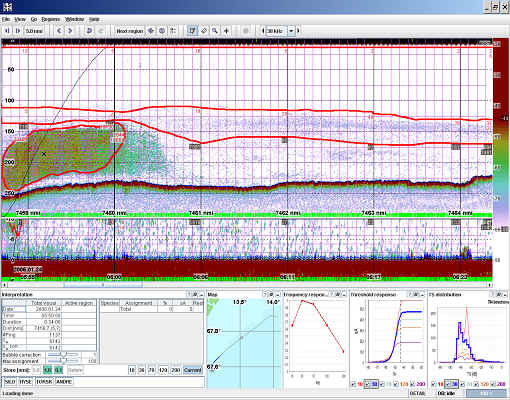 |
||||||
 |
 |
 |
||||
| PRODUCTS | |
| LSSS | |
| Work process overview | |
| Key features | |
| Input data | |
| Interpretation overview | |
| Interpretation tools | |
| Interpretation format | |
| References | |
The key to understand storage of interpretation results lies in the rules for defining interpreted regions. As mentioned before, such regions can either be composed of curved horizontal layers or closed contours. The following rules apply for defining such regions:
- Layers can take arbitrary shapes, but can't be self-intersecting or intersect with nearby layers.
- Closed contours can take arbitrary shapes, i.e. have both concave and convex regions, but they can't intersect with each other, and they can't be self-intersecting.
- If contours and layers are defined for the same area, the contours take priority when results are stored.
Each interpreted region will have one or several associated species identifiers. The interpretation data for each region will also include the percentwise distribution of the species present in the region (if more than one).
When the data is stored, the interpreted echogram is simply divided into small squares. The user can control the resolution of the squares in the configuration, either during setup of a new survey, or at any time during interpretation. Layered regions and contour regions can have different resolutions. The acoustic integral is then stored for each square, together with definitions of regions and associated interpretation data.
The figure below shows an example of an interpreted region and the associated interpretation grid.

